Vanadium Pentoxide
This chemical standard operating procedure (SOP) and the associated Safety Data Sheet (SDS) are for our safety. Read and understand both documents. If this is a paper copy, check for updated versions on the IsoLab website.
Process
Vanadium pentoxide is used as a combustion aid the elemental analysis of sulfur.
Hazards - SDS
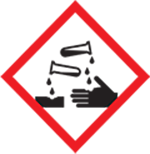
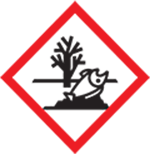
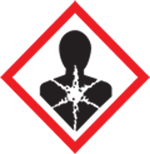
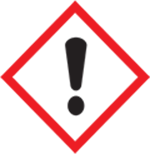
Harmful if swallowed or if inhaled. Causes serious eye damage. May cause respiratory irritation. Suspected of causing genetic defects. Suspected of damaging fertility or the unborn child. Causes damage to organs through prolonged or repeated exposure. Toxic to aquatic life with long lasting effects.
Protection - SDS
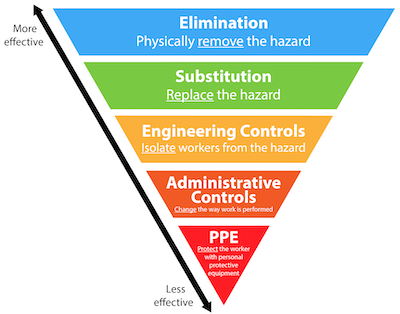
Engineering Controls
Acetic anhydride may be used in any of the fume hoods located in the 302 / 303 suite. Do not open the bottle outside of a fume hood. Ensure the fume hood has proper air flow by checking the flow rate on the control panel and / or using a smoke match or wipe to visualize flow.
PHS - We typically use vanadium pentoxide in the 302A fume hood but any fume hood in the 302/303 suite will be fine.
Administrative Controls
PHS - Tell others in the lab that you are using vanadium pentoxide. Do not allow anyone else to work in the same fume hood while you are working with vanadium pentoxide unless they are working with you. If you must leave the fume hood for any period of time, close the sash and tape a sign up indicating the presence of vanadium pentoxide.
Personal Protective Equipment (PPE)
Wear a lab coat, eye protection, and nitrile gloves when working with vanadium pentoxide.
PHS - Keep the fume hood sash low for facial protection when working with vanadium pentoxide.
Handling - SDS
Keep container tightly closed when not in use. Make sure you have your laboratory coat and gloves on before handling the bottle. We use smaller, easier to handle, glass vial containers for routine handling of vanadium pentoxide. Do not use the stock bottle when loading vanadium pentoxide into your sample tins.
PHS - Decontamination - Make sure all vanadium pentoxide has been cleaned up and contained in appropriate containers before moving away from the fume hood. Ensure all utensils and trays have been wiped clean before removing them from the fume hood.
Storage - SDS
In general, Vanadium pentoxide must be stored in a desiccator. Use MyChem, the UW EH&S chemical inventory database, for more storage details. Vanadium pentoxide should be stored in the desiccator in 303B.
Spills - SDS
Avoid dust formation. Avoid breathing dust.
PHS - Exposure:
- Inhalation - If breathed in, move person into fresh air. If not breathing, give artificial respiration. For advice, call UW Employee Health Center (206.685.1026) or the Washington Poison Center (800.222.1222). For emergency help, call 911.
- Skin contact - Wash off with soap and plenty of water. Take victim immediately to hospital or call the Washington Poison Center (800.222.1222) or a physician or 911.
- Eye contact - Rinse thoroughly with plenty of water for at least 15 minutes. For advice, call UW Employee Health Center (206.685.1026) or the Washington Poison Center (800.222.1222). For emergency help, call 911.
If the spill is fully contained inside the fume hood, close the sash and prepare yourself to clean it up. Grab the closest spill kit. Make sure you have the appropriate PPE on (lab coat, nitrile gloves, eye protection). Do not allow the substance to enter the drain. Avoid generating air-borne dust. Try to clean up as much as possible with dry means. Put all generated waste into a bag. See Waste section below.
All personnel without PPE should evacuate the room if there is a spill outside of the fume hood. Dust may present a serious health risk. If spill is outside of fume hood, don a respiratory mask located in 303B west wall drawers in addition to a laboratory coat, nitrile gloves, and goggles. Avoid dust formation. Avoid breathing dust. Prevent further leakage or spillage if safe to do so. Do not let product enter drains. Discharge into the environment must be avoided. Pick up and arrange disposal without creating dust. Sweep up and shovel. Keep in suitable, closed containers for disposal.
If you need assistance or advice, use the IsoLab Emergency Contacts sheet.
Consult the EH&S Spill Poster and Exposure Poster
Waste - SDS
If you are cleaning up after a spill and have a bag of debris, ensure the bag is sealed and use multiple bags as needed. Complete an EH&S Hazardous Waste Label and adhere it to the bag. Here are instructions for how to label chemical waste containers. Labels are located in a drawer on the west wall of 303B near the door to the hallway.
Put all waste into a plastic, wide-mouth, container. Options for waste containers can be found under the west sink in 303B. Complete an EH&S Hazardous Waste Label and adhere it to the bottle. Here are instructions for how to label chemical waste containers. Labels are located in a drawer on the west wall of 303B near the door to the hallway.
Place the properly labeled container in one of the gray tubs near the hallway door of 303B. Segregate from other waste containers as appropriate.
Consult our generalized Chemical Waste Disposal SOP.

Training - PHS
Vanadium pentoxide is deemed a particularly hazardous substance - PHS by EH&S and you need approval before using it. Complete the list of requirements below before using this chemical.
Prerequisites
- You must have completed Managing Laboratory Chemicals in the last three years. Login to check.
- Read and understand the SDS for Vanadium pentoxide.
- Read, understand, and digitally sign this SOP.
- Contact your Principal Investigator (PI) AND the Chemical Hygiene Officer (CHO) indicating that you have completed all prerequisites and await approval.
